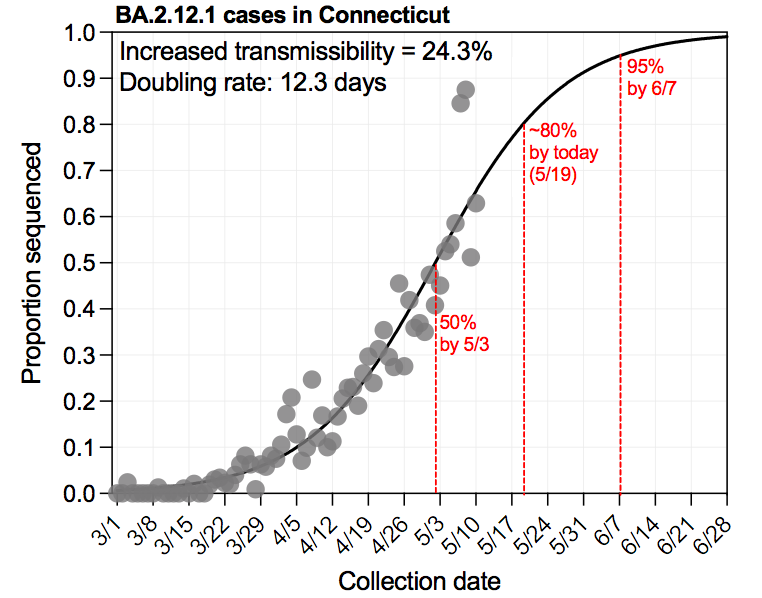🧬 9/2 Connecticut #SARSCoV2 variant surveillance
@CovidCT | @jacksonlab | @CTDPH | @YaleSPH | @Yalemed
Delta - 99.6% (530 sequenced)
Gamma - 0.4% (2 sequenced)
Mu - 0%
All others - 0%
short 🧵 | Report 👉
covidtrackerct.com/variant-survei…
@CovidCT | @jacksonlab | @CTDPH | @YaleSPH | @Yalemed
Delta - 99.6% (530 sequenced)
Gamma - 0.4% (2 sequenced)
Mu - 0%
All others - 0%
short 🧵 | Report 👉
covidtrackerct.com/variant-survei…
Delta is split up into 25 sub-lineages - mostly for tracking purposes. These are the top in CT, along with their defining mutations.
B.1.617.2 - 57%
AY.25 - 18% - synonymous mutation
AY.12 - 10% - Spike T791I
AY.3 - 8% - Orf1ab I3731V
Please read on...
(2/8)
B.1.617.2 - 57%
AY.25 - 18% - synonymous mutation
AY.12 - 10% - Spike T791I
AY.3 - 8% - Orf1ab I3731V
Please read on...
(2/8)

Delta sub-lineage AY.12, with the Spike T791I mutation, has received some attention because its 60-80% in Israel, but its not currently increasing globally. Its been mostly hovering between 4-6% since mid-June.
Fig from @DiseaseOutbreak
tinyurl.com/3xvnhvyh
(3/8)
Fig from @DiseaseOutbreak
tinyurl.com/3xvnhvyh
(3/8)

While AY.25 is the most common Delta sub-lineage in CT - it was named purely for tracking purposes. Its defining mutation A27507C is synonymous, meaning that it does not change the virus' proteins. AY.25 is not likely any different than B.1.617.2. Its also <1% globally.
(4/8)
(4/8)

With Delta's dominance, the next major variant may arise from within this clade. Thus, we & others are continuing to track Delta's evolution. Of interest, we've found a few Delta genomes in CT with the E484Q mutation on 3 different lineages. Something to 👀, but not 😱
(5/8)
(5/8)

This week, B.1.621 - that we've been tracking closely in CT for months - was given a greek letter by the WHO - Mu
It has a couple of key mutations - N501Y + E484K. But its prevalence is 📉...
(6/8)
It has a couple of key mutations - N501Y + E484K. But its prevalence is 📉...
(6/8)
https://twitter.com/mvankerkhove/status/1432795885214306316?s=20
However, the period of concern for Mu in Connecticut - and many other places in the US - is over. It was able to compete with with Alpha & Gamma, but it was no match for Delta 👊
(7/8)
(7/8)

This week I'd like to thank the incredible team at @PangoNetwork for creating and maintaining the lineage system necessary for our surveillance programs. Please routinely check 👇 for updates and information about new lineages.
pango.network/news/
(8/8)
pango.network/news/
(8/8)
• • •
Missing some Tweet in this thread? You can try to
force a refresh















